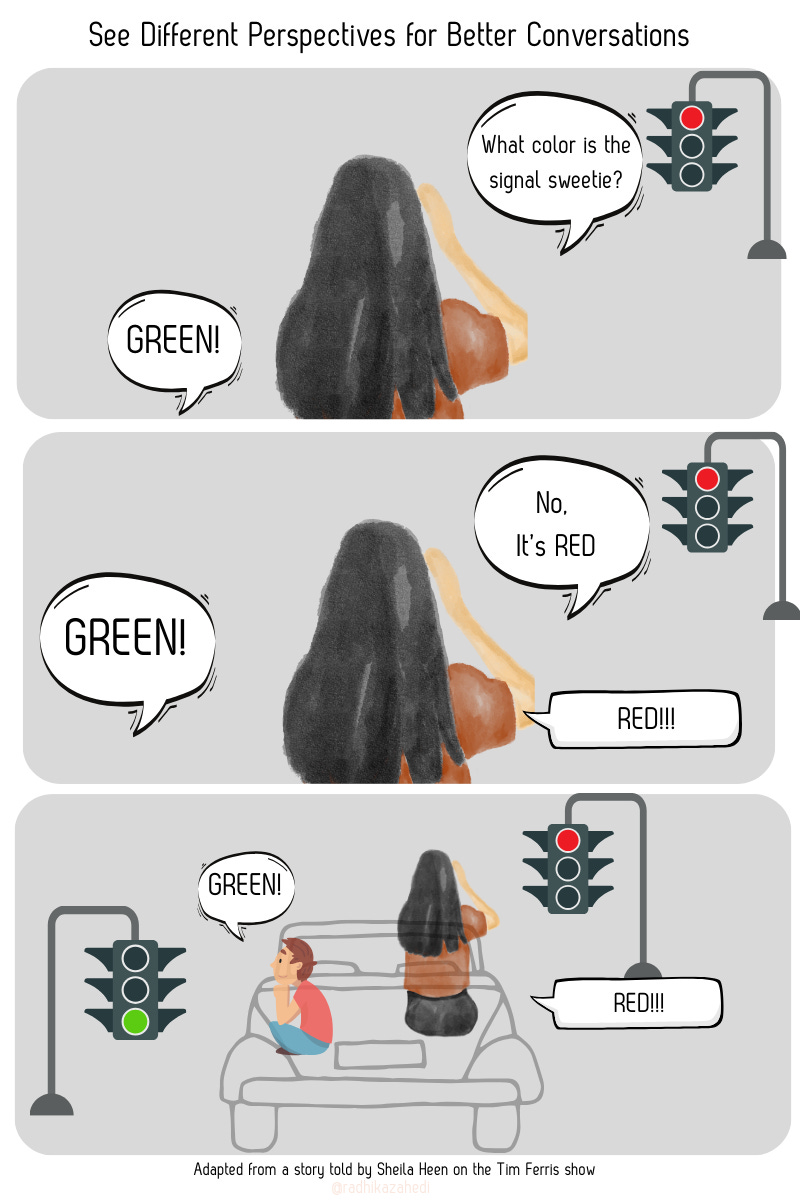Difficult Conversations: Stress Less and Care More
Insights from 'Non-Violent Communication' by Marshal Rosenberg
Many conversations are both difficult and important.
Recently I have been reading a lot about navigating difficult conversations, to improve my own leadership skills and to support my leadership team.
Two books have influenced my thinking a lot:
Nonviolent Communication by Dr. Marshall Rosenberg and
Difficult Conversations by Stone, Patton and Heen.
Here are my takeaways:
Why are some conversations difficult?
Difficult conversations aren’t about the toughest problems.
They are about feelings. The conversations that have the potential to make us feel angry, hurt, ignored, intimidated, nervous, vulnerable, frustrated, guilty, disappointed, ashamed, embarrassed, etc.
Conversations are difficult when it is very hard to use reasoning and clear thinking when we are feeling strong emotions.
Intent matters:
The two most important purposes for investing in a difficult conversation are
To achieve mutual goals
To strengthen relationships
What we don’t want the reasons to be:
To get my way or prove my point (Demand)
To judge (or show them) who was right/ wrong (Diagnose)
To blame, shame or punish (Deserve)
To establish “it wasn’t me” (Deny)
Why does our intent matter?
Because the wrong intent can block communication and connection. Rosenberg calls them the 4 ‘D’s that block communication and compassion.
How? Because our intentions influence our thoughts, our thoughts influence our words and actions, and these influence our interactions and outcomes.
And this will make it hard to achieve our 2 goals of achieving mutual goals and strengthening relationships.
3 steps to Navigating Difficult Conversations
(Adapted from Non-violent Communication Process)
Shifting into a Learning mindset
Listening to/ Expressing feelings and needs without judgement
Resolving by making requests
1. Shifting into a learning mindset:
Before we get to the conversation it’s important to ensure that we are going in with a learning mindset that is free of assumptions and judgements.
We must recognise that
We might not have all the information we need
Both people might be seeing different things from their perspectives
It is not helpful to make assumptions, judgements and inferences
Learning Mindset Thinking IS
How can I learn more about the situation?
Are there things I may have missed?
How might I understand what the other person is feeling or needs?
What do I feel about the situation? What do I need?
Learning Mindset Thinking IS NOT
Fuelling the stories we might be telling ourselves:
I know it was on purpose, he always does that
It was so wrong, it was unfair
I am always their scapegoat/ a victim here
I never have a choice
I need to show them who’s right
They are sly, I expect them to cheat me
She is not a nice person
Our thinking or the language we use in our heads often determines what we do next.
2. Express feelings and needs without judgement:
The first part of the conversation should focus on
Listening for the other person's feelings and needs without judgement (irrespective of how they say it)
Expressing your own feelings and needs without judgement
Expressing feelings and needs without judgement can be tricky because often we think we are doing so but the judgement is hidden in our words.
Expressing Feelings and Needs IS
‘I’ messages, which provide a good structure for expressing feelings and needs:
I feel… because I …
I need … because I …
Here is a list of words to express feelings and needs that we can use (from Non-Violent Communication, Rosenberg)
Expressing Feelings and Needs IS NOT
Hidden blame
I am angry because YOU didn’t deliver the work on time.
Instead, say: I feel frustrated because I didn’t receive my work on time.
Hidden demands
I need YOU to give me my work on time.
Instead, say: I need my work on time so I can meet my own responsibilities as promised.
In general it is good practice to
Express what you feel and need with ‘I’s
Avoid the use of ‘You’
Similarly when we invite the other person to share we must do our best to identify the feelings and needs behind their statements, without judgement. Even if they are making the mistakes listed above while sharing.
These will enable communication, care and compassion.
3. Make Requests (not demands) towards Mutual Goals
Finally, once we feel we both people’s feelings and needs have been expressed and understood we can move to making requests towards achieving mutual goals.
Making Requests IS
Making requests sounds like:
Would you be willing to…
Do you think we could…
It would be helpful for me if we …. Is that feasible for you?
Making Requests IS NOT
Making demands (not requests) sounds like:
You should / must/ have/ need to….
I have found this framework to be a very useful mental guide for me through difficult conversations. Of course I am no expert and I have left out all the nuance in this post, so if you are looking to understand in a more sophisticated way I would highly recommend the book 'Nonviolent Communication’ by Dr. Marshall Rosenberg.
May we all have many enriching difficult conversations!





